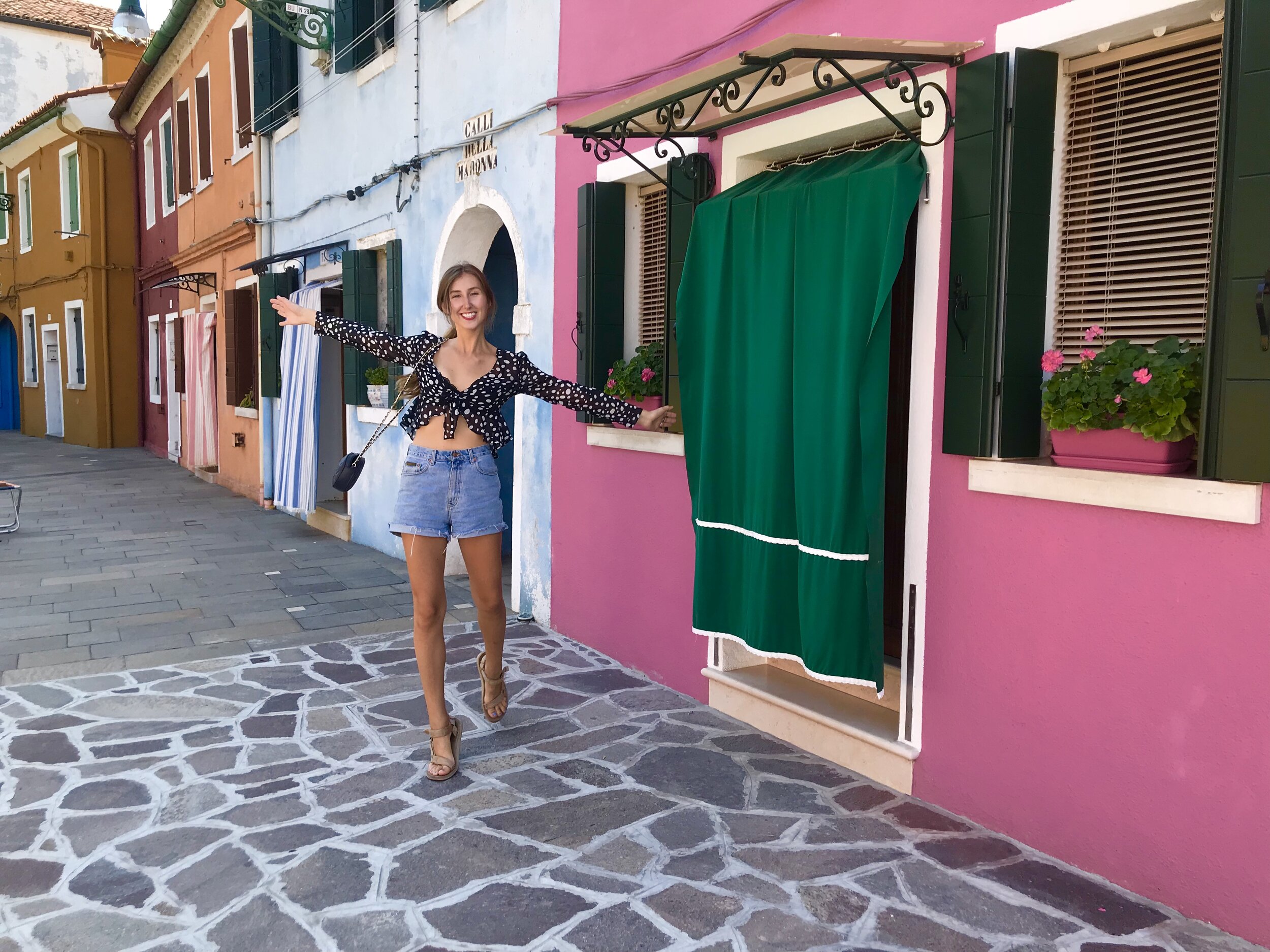The Sinking Village of Burano
Coming into the port of Burano, vestiges of buildings lay crumbled at their foundations. The outstretch of the island is being slowly reclaimed by the ocean. Coastal communities like Burano are at imminent risk of devastation if sea levels and global temperatures continue to rise. In November of 2019, nearby Venice saw catastrophic flooding, the city submerged in 6 feet of water at the highest point. Photographer Sam Youkilis captured the persistence of daily life, the water like a dystopian art installation.
Burano is a small island off the coast of northern Italy, with a resident population just shy of 3,000. Canals connect the neighborhoods of the island, the old streets in various states of repair. Thin alleys lead to intimate courtyards, where older women sit and watch their world go by. Long alleys lead to the water—or church, but those are one and the same, no? Doors are left open for the breeze, an exhibition of mutual trust. The houses shouldering each other are painted vivid hues of pink, orange, and blue. The air is salty and warm, and Burano is preserved in time.
From the Venetian mainland, the vaporettos shuttle crowds across the green water to outlying islands. Those who can wake with the sun and haul ass to the docks are rewarded by an unfettered view of the Venetian Lagoon, empty seats indicating an advantage. Burano is four miles, or seven kilometers, from Venice. Take line 12 for €6.50 per person, the ride about 45 minutes by water.
The streets feel animated with nostalgia. Burano has its own leaning tower- the church of San Martino that was built in the 16th century. Unruly flowers tumble from windowsill planters and laundry drying on the line is enchanted by simplicity. There is an anecdote peddled by tour guides about the colorful houses. You see, Burano was an enclave of fishermen, who spent long days on the water. The village collectively painted each house a different color to make them more visible from the sea, even through the mists. When the fisherman came home late at night, exhausted, the colors guided them home.
The alternative story is that the fisherman would enjoy a nightcap at the bar, and slyly sneak into the house of beautiful women, feigning confusion. Finally, the women painted their houses in creative resistance, bright colors challenging the excuses of stumbling drunks.
Regardless of how the painted homes came to be, they are now entwined with the identity of the Burano. Each home has its unique signature, dazzling in the sun. To change colors or apply a fresh coat, residents must seek governmental approval so the town’s aesthetic is maintained.
Like the close island of Murano, known for its glass, Burano artisans draw international attention through the preservation of traditional art forms. Storefronts offer beautiful displays of lace, all diligently stitched by hand. The Scuola del Merletto is a museum that celebrates the tradition of lacemaking, passed down through generations of Burano women.
The rich gastronomy of the island is influenced by its natural environment. Fishermen rolling in from the sea sell their catch to local restaurants, where the ingredients are elegantly transformed. Always go with the pasta of the day. The meals served on Burano will be fresher and more affordable than anything you’ll find in Venice. This is where your Nonna’s Nonna’s Nonna learned to cook, you know? Despite the remote location, the village boasts a Michelin-star restaurant, Venissa. Though I didn’t get the opportunity to dine at Venissa, I was delightfully surprised by the recognition of brilliance. Something to look forward to on the next trip to Burano, I suppose!
Most of the boats that line the canal now have motors, though some still persist with wooden oars. Of course, time has altered the ways of living in Burano, but the natural simplicity of life can still be observed. See the grandmothers sweeping their entryways, unsure if they are supporting the brooms or the brooms are supporting them; children’s laughter echoes off the stucco walls like the balls they throw; A consistent crowd gathers every day for Mass.
I spent half a day in Burano, languidly strolling over the canals, stopping for gelato, cats, and gorgeous flower-pressed earrings. If you plan your visit correctly, you should be leaving the island just as the waves of tourists with cross-body bags arrive. Hop back on the 12 and appreciate the tour of the rest of the islands, until it loops back to Venice.
I hope to return to Burano, before it’s rendered uninhabitable by rising tides. My next tattoo will be the colorful houses, permanently fixed on my arm. A memory of the beautiful things that climate change will take from us, if we let it.








